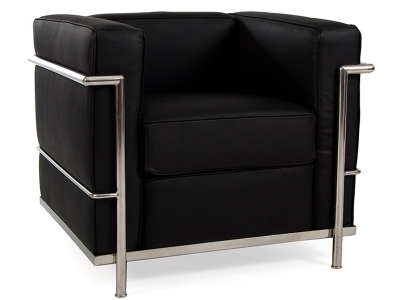Le Corbusier and USM Haller
Case Studies
Le Corbusier - Swiss Federal Supreme Court, judgement of 5.5.1987, BGE 113 II 190, 197 f.: [...] The one as well as the other must also be observed in the case of works of applied art, which are covered by the legal term (Art. 1 para. 2 URG (Copyright Act) at the end). The purpose of use does not prevent the protection of an object that has an individual character. According to Art. 5 URG and contrary to the criticism of KUMMER (in Festschrift Troller p. 113 ff. and in ZBJV 117/1981 p. 156 ff.) of the case law of the Federal Supreme Court, this applies even to objects of utility which have been deposited as designs or models but which also fulfil the special requirements for protection of the URG. [...]
These requirements are fulfilled here according to what has been established in factual terms about the novel development in architecture and in the art of furniture in the 1920s. As the lower court, together with the expert, states on the basis of authoritative sources, Le Corbusier is regarded as one of the most renowned representatives of a new style, which is referred to as functionalism, because it strives for the highest functionality in the furnishing of rooms, combines modern construction technology in the use of new building elements, in particular bent tubular steel, with aesthetically and objectively satisfactory forms. Appropriate connections of components are also always functional, but cannot easily be equated with technical or purpose-related solutions, which is why, contrary to the defendant's view, it cannot be said that the design of the disputed pieces of furniture is dominated by the purpose of use of the objects; the same seating options can be designed not only artistically, but also technically in very different ways. Moreover, the artistic impression of the disputed models is not the necessary or even the exclusive consequence of a single construction element; rather, it is determined by the design, lines and interaction of all elements. [...]
USM Haller - OLG Frankfurt/Main, judgement of 11.2.1988, GRUR 1990, 121: [...] In this aesthetic overall impression of the USM Haller programme, which deviates considerably from the previously known set of forms, a design achievement considerably exceeding the average ability of the furniture designer and a personal, intellectual creation of the author are revealed. [...] The court expert [...] correctly pointed out that the design achievement of the USM-Haller programme does not lie in the visualisation of the technical variability of the modular system, but in the symbolisation of the mobility of modern technical life, as it is also expressed in portable television and radio sets, electronic computers, etc. [...] Furthermore, the design of the USM-Haller programme is not only a symbolic achievement, but also an expression of the mobility of modern technical life. [...] Moreover, this evidentiary finding is confirmed by various signs of evidence [...]. For example, the plaintiff's programme has not only been recognised as an outstanding design achievement in the book "Moderne Klassiker-Möbel, die Geschichte machen" ("Modern Classic Furniture that Makes History"), but the programme has also indisputably been included in "Die neue Sammlung" ("The New Collection") of the State Museum of Applied Arts. [...]

